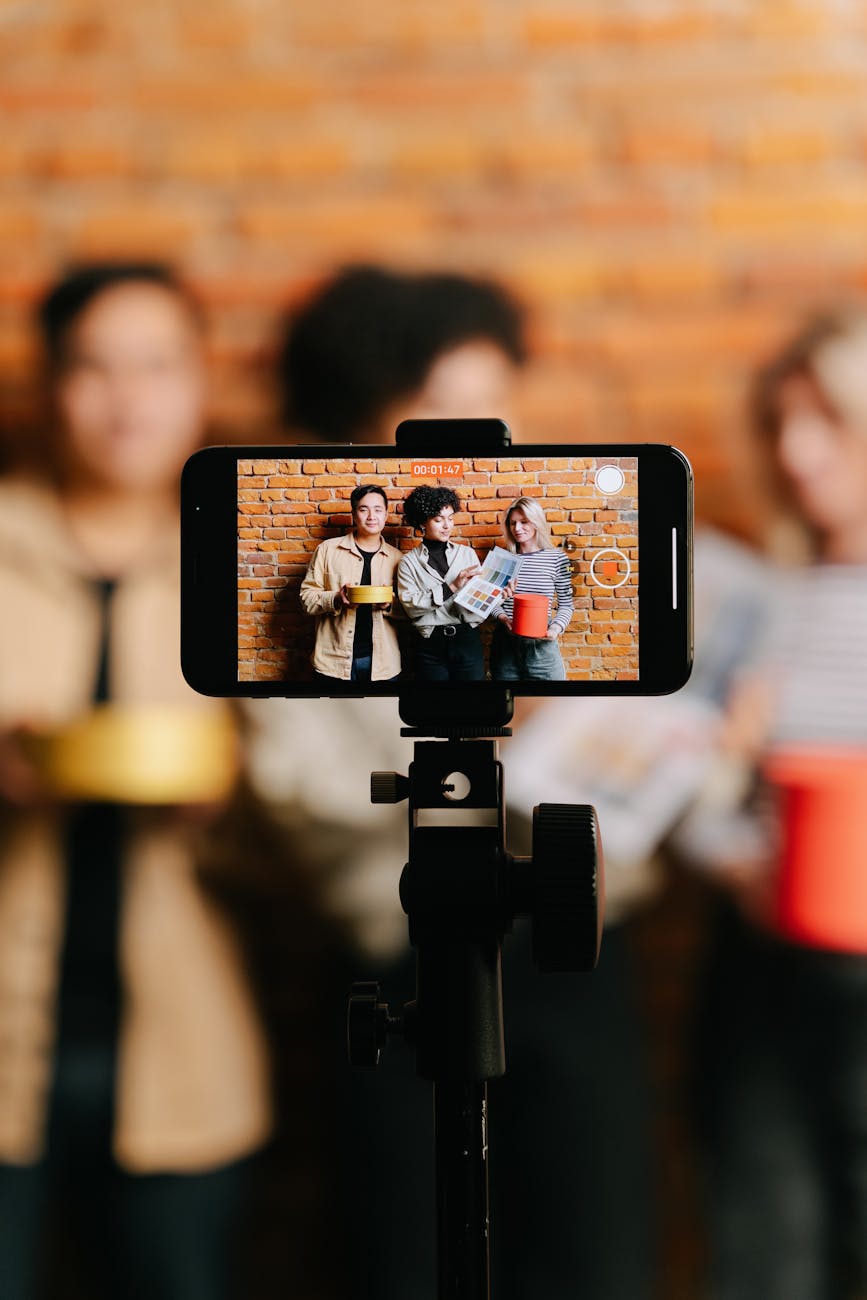AI Blog Content: How to Edit for Maximum Organic Traffic

1. Introduction: The Power of Human Editing in the Age of AI
The world of content creation is rapidly evolving, with Artificial Intelligence (AI) at the forefront. AI-powered tools are revolutionizing how businesses create blog content, offering unprecedented speed and efficiency. However, while AI can generate articles much faster than a human, the initial output often lacks the nuance, strategic optimization, and engaging quality needed to truly connect with readers and perform well in search engines. That's where the human touch comes in.

Time and money: Combining AI efficiency with human expertise is key to content creation success.
Think of it like this: AI is the tireless intern, churning out drafts at lightning speed. But you, the experienced editor, are the one who shapes that raw material into a polished, compelling piece that resonates with your audience and climbs the search engine rankings.
The Rise of AI Content Generation
AI content generation tools have become increasingly sophisticated. They can analyze vast amounts of data, understand complex topics, and generate text that mimics human writing. This technology presents a significant opportunity for businesses looking to scale their content marketing efforts while saving time and resources.
Why AI-Generated Content Needs Human Editing
Despite its advancements, AI is not a complete replacement for human expertise. AI-generated content often exhibits certain shortcomings:
- Lack of Nuance: AI can struggle with understanding context, humor, and emotions, sometimes resulting in writing that feels bland or robotic.
- SEO Gaps: While AI can incorporate keywords, it may not fully grasp the intricacies of search engine optimization (SEO) or how to strategically structure content for maximum visibility.
- Inaccuracy: AI relies on the data it's trained on, which may contain outdated or incorrect information. Therefore, verification is crucial.
- Engagement Issues: AI-generated content can sometimes lack the compelling storytelling and unique perspective that captivates readers.
Blending AI Efficiency with Human SEO Expertise
The key to unlocking the true potential of AI in content creation lies in combining its efficiency with the strategic expertise of human editors. This guide will provide you with a step-by-step process for editing AI-generated blog content to maximize its impact on organic traffic, ensuring it's both search engine-friendly and engaging for your target audience.
2. Understanding Your Target Audience and Keywords
Before you begin editing, it's essential to understand who you're writing for and what they're searching for. This understanding will guide your editing process and ensure your content resonates with the right people.
Defining Your Ideal Reader
Who is your ideal customer? What are their pain points, interests, and goals? Creating a detailed buyer persona will help you tailor your content to their specific needs and preferences. Consider these factors:
- Demographics: Age, location, job title, income.
- Psychographics: Values, interests, lifestyle, motivations.
- Online Behavior: Where do they spend their time online? What kind of content do they consume?
Keyword Research: Finding the Right Terms
Keywords are the foundation of SEO. Identifying the right keywords will help you attract the right audience to your blog. Use keyword research tools like Google Keyword Planner or SEMrush to find valuable data on search volume, keyword difficulty, and related keywords. This will help you identify high-potential keywords that align with your target audience and content.
Don't forget about long-tail keywords! These are longer, more specific phrases that people use when they're closer to making a purchase or seeking a specific answer. Targeting long-tail keywords can help you attract a highly qualified audience and improve your chances of ranking higher in search results. For example, instead of "content marketing," try "content marketing strategy for small businesses."
Understanding Search Intent
Search intent refers to the reason behind a user's search query. Are they looking for information, a product to buy, or a specific website? Understanding search intent will help you create content that satisfies their needs and ranks higher in search results. There are generally four types of search intent:
- Informational: Seeking information on a specific topic.
- Navigational: Trying to find a specific website or page.
- Commercial Investigation: Researching products or services before making a purchase.
- Transactional: Ready to make a purchase.
3. Structuring Your AI-Generated Content for SEO
A well-structured article is easier for both readers and search engines to understand, leading to improved engagement and rankings.
Crafting a Compelling Headline
Your headline is the first impression you make on potential readers. It needs to be attention-grabbing, informative, and relevant to their search query. Make sure your headline includes your primary keyword to signal to search engines what your content is about. Also, consider using power words, which are emotionally charged words that can make your headline more persuasive and engaging. Examples include "Proven," "Secret," "Ultimate," and "Essential."
Optimizing Meta Descriptions
The meta description is a brief summary of your content that appears below the headline in search results. It's your opportunity to convince users to click on your link. Meta descriptions should be no more than 155-160 characters. Use this space to highlight the key benefits of your content and entice users to learn more. Encourage users to click on your link by including a clear call to action, such as "Learn More," "Get Started," or "Discover Now."
Creating a Clear and Logical Outline (H1, H2, H3 Tags)
Using proper heading tags (H1, H2, H3, etc.) helps search engines understand the structure and hierarchy of your content. Incorporate relevant keywords into your headings and subheadings to further optimize your content for search. Your outline should follow a logical progression, guiding readers through your content in a clear and concise manner.
4. Editing for Readability and Engagement
Even the most SEO-optimized content will fail if it's not engaging and easy to read. Readability and engagement are crucial for keeping visitors on your page and encouraging them to explore further.
Improving Sentence Structure and Flow
Long, complex sentences can be difficult to understand. Break them up into shorter, more manageable sentences to improve readability. Use active voice to make your writing more direct and engaging. For example, instead of "The report was written by the team," write "The team wrote the report."
Adding a Human Touch
AI-generated content can often sound robotic and impersonal. Inject your own personality and tone into the writing to make it more relatable and engaging. Sharing personal anecdotes or examples can help you connect with your audience on a deeper level and make your content more memorable.
Ensuring Accuracy and Fact-Checking
Always double-check the accuracy of the information presented in the AI-generated content. Verify facts, statistics, and claims to ensure credibility.
Optimizing for Mobile Readability
Long paragraphs can be overwhelming on mobile devices. Break them up into shorter paragraphs to improve readability. Bullet points and lists make it easier for readers to scan and digest information on mobile devices.
5. Optimizing for On-Page SEO
On-page SEO refers to the techniques you use to optimize your content for search engines directly on your website.
Keyword Placement
Incorporate your target keywords naturally throughout your content, including in the headline, meta description, headings, and body text. Avoid overusing keywords, as it can actually harm your SEO. Focus on creating high-quality, informative content that naturally incorporates your target keywords.
Internal Linking
Internal linking helps search engines understand the structure of your website and improves website navigation. Internal links can guide users to other relevant content on your website, keeping them engaged and reducing bounce rate.
External Linking
Linking to authoritative sources enhances the credibility of your content and provides readers with valuable resources. External links demonstrate that you've done your research and are providing accurate information.
Image Optimization
Alt text is a description of an image that is displayed when the image cannot be loaded. Use descriptive alt text to help search engines understand the content of your images. Large image files can slow down your website's loading time, which can negatively impact your SEO. Compress your images to reduce their file size without sacrificing quality.
6. Enhancing User Experience (UX)
A positive user experience is crucial for attracting and retaining readers. When users have a good experience on your site, they're more likely to stay longer, explore more pages, and return in the future.
Adding Visual Appeal
Visual elements can break up text, make your content more engaging, and help illustrate complex concepts. Use images, videos, and infographics to create a visually appealing and engaging reading experience.
Improving Website Speed
Optimizing images is crucial for improving website speed. A Content Delivery Network (CDN) distributes your website's content across multiple servers, reducing loading times for users around the world.
Ensuring Accessibility
Proper heading tags make your content more accessible to users with disabilities. Alt text is essential for users who are visually impaired.
7. Measuring and Analyzing Your Results
Tracking your results is essential for understanding what's working and what's not. Data-driven insights allow you to refine your content strategy and maximize your ROI.
Tracking Key Metrics
Monitor your organic traffic to see how your content is performing in search results. Track your keyword rankings to see how your content is ranking for your target keywords. Bounce rate is the percentage of visitors who leave your website after viewing only one page. A high bounce rate may indicate that your content is not engaging or relevant to their search query. Time on page is the average amount of time that visitors spend on a particular page. A longer time on page may indicate that your content is engaging and informative.
Using Analytics Tools
Tools like Google Analytics and Google Search Console provide valuable data on your website's traffic, keyword rankings, and user behavior.
Making Data-Driven Adjustments
Use the data you collect to make informed decisions about your content strategy. Experiment with different headlines, keywords, and content formats to see what resonates best with your audience.
8. Conclusion: The Future of AI and Human Collaboration in Content Creation
AI is transforming the content creation landscape, but it's not a replacement for human expertise. By combining the efficiency of AI with the strategic thinking and creative touch of human editors, you can create blog content that drives organic traffic, engages your audience, and achieves your business goals.
Remember to focus on understanding your audience, optimizing for SEO, enhancing readability, and ensuring accuracy. SEO is an ongoing process. Continuously monitor your results and make adjustments to your content strategy as needed.
The best way to learn is to experiment. Don't be afraid to try new things and adapt your approach based on what works best for your business. The future of content creation is a collaborative one, where AI and humans work together to create exceptional content that delivers real results.
Ready to see how AI-powered content can transform your blog? Contact us today for a free consultation and let's discuss how we can help you achieve your content marketing goals!
